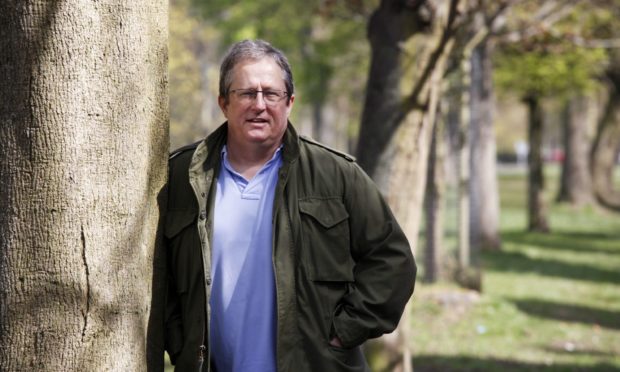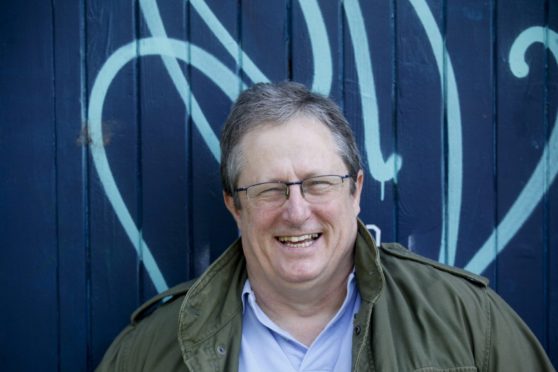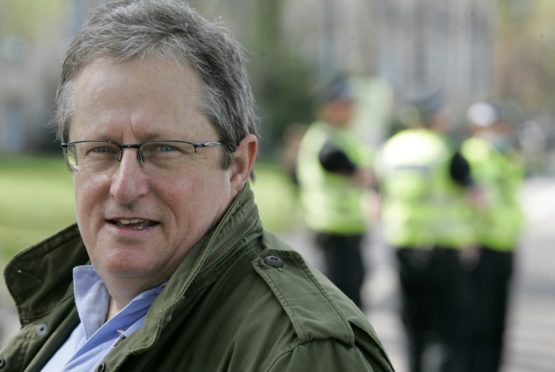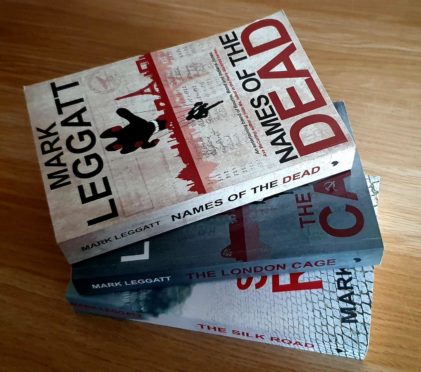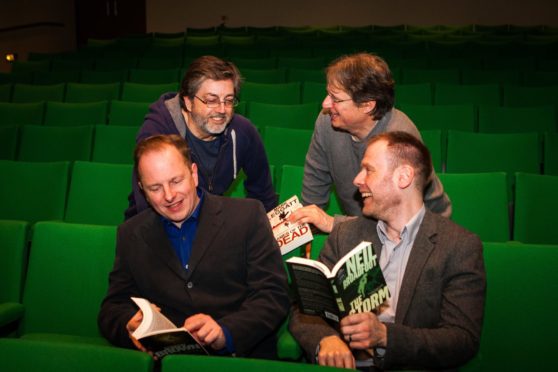From Lochee to London to the South of France, Mark Leggatt could be our own international man of mystery.
Instead, he has has become of one Scotland’s best-loved contemporary thriller writers, with a trilogy of books.
These follow his creation, Connor Montrose, across the globe in the world of modern espionage, terrorist plots and underground arms sales.
Aside from his Connor Montrose novels, Names of the Dead, The London Cage, and The Silk Road, Mark also writes historical fantasy under the Mark McGarry.
All this has happened in the past decade for Mark.
How did the former specialist in Disaster Recovery and Technology Project Management realise that dream that’s in so many people? That “I have a book in me” dream.
“I was one of those folk!” he says from his home in Edinburgh.
“My job took me all over Europe, and at one point I was living in the south of France with time on my hands between two contracts. I had two months. It was time to try to write that book. I always thought I could but was it just a conceit?
“It was time to go to the next village and empty the stationers of paper, pens and pencils. I went home cleared the dining table, got some funny looks from the dogs, and started writing.
“I had no idea where I was going, but I was going.”
Good writers tend to be enthusiastic readers and Mark has always been one of those. When he lived in Menzieshill in Dundee, he was unemployed he would walk the six-mile round trip every day into the Central Library.
“Sometimes I would go to Lochee Library for a change but I would read whatever I fancied there. Libraries kept my head together at that point.”
Head south young man
Unable to find work in Dundee as a young man he headed to London. “It was the Thatcher years and there was no work here so like many young folk, my brother included I tried my hand in London.”
Years later we find him at the dining table in the south of France, but his road to publication was a few years away.
” I think it took about four years to get to the end of that first book,” he says. “I took a lot of professional advice. How to create a story, craft the story, how to plot the narrative… Most of it was practice.”
Still working, Mark used time waiting in airports to write and the book grew as he travelled.
“Then, to cut a long story short, I got my first book published.”
No, no…we can’t cut that short? How did that happen?
“Well of course, that wasn’t easy either. That is just patience and perseverance. Now you can have a decent career self-publishing, but when I was kicking off it maybe had more of a stigma.
“Even getting an agent took me about two years. I eventually got a great agent in New York and then lost him when he went back to working in publishing.
“A publisher in Edinburgh liked the book and was happy to take it. It had always seen this as a series of three books and they were happy to support me in that.”
I cleared the dining table, got some funny looks from the dogs, and started writing. I had no idea where I was going, but I was going.”
Connor Montrose was introduced in to the literary canon of international spies and Mark was invited to festivals including Thillerfest in New York to promote all three Montrose tales.
“I wanted to write a series, I wanted the character to change, and I wanted the character to change because of what happened to him in the book.
“Because if your character is the same at the end of the book as he was at the beginning, then nothing really happened. Happy endings are for romance.”
Even though the crime writing scene in Scotland is competitive it can also be collegiate.
Mark is also part of a travelling troupe of crime writers who perform Four Blokes in Search of a Plot at festivals and events across the country. The other three being Neil Broadfoot, Gordon Brown, and Douglas Skelton.
“It started when Creative Scotland had an idea for Book Week Scotland. They gathered all the crime writers and had them write a story in collaboration. One would write a bit of the story then pass on to the next and so on.
“I think it was 23rd in the list or something, but the next year they asked four of us. We agreed on a format where we would make a story up off the top of our heads with the help of an audience.
“When one of us is writing, the other three answer question and tell stories about their books and writing in general, The fact that the one writing has to wear the tea cosy off inspiration shows how seriously we take it. It’s inspired by Spike Milligan who said, ‘Never trust’ a man who, if left alone with a tea cosy, doesn’t try it on’.”
The audience provides ideas for the weapon, protagonist etc and the writers provide the entertainment. There’s a show scheduled for September in Glasgow and Mark is looking forward to getting out in front of an audience again.
His work-in-progress is a psychological thriller. Connor is gone, but there are many ideas around, one that’s almost fully formed and the one that Mark sees as his “Dundee book”. He laughs when I say it could start a new strand of Lochee noir.
Mark fits in his writing around his new role as a consultant. He provides manuscript assessment, editorial advice, classroom lecturing, personal coaching and 1-2-1 mentoring. It’s only the very top of the pyramid who can sit back and let royalties role in.
Printing books – not money
“A very small percentage actually make decent money. Below that , yeah, you can make make a few bob from it, but about I would probably say around 95% of writers don’t make more than £12,000 year from books.
“If a book sells for £10 I’ll get £1. So it’s a way to get rich, very very slowly,” he laughs. “If I looked back at that dining table in the south of France and knew I would be where I am now, I’d be fine with that.”
Names of the Dead, The London Cage and The Silk Road are published by Fledgling Press.
